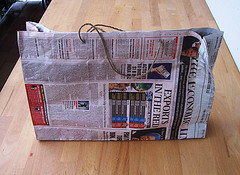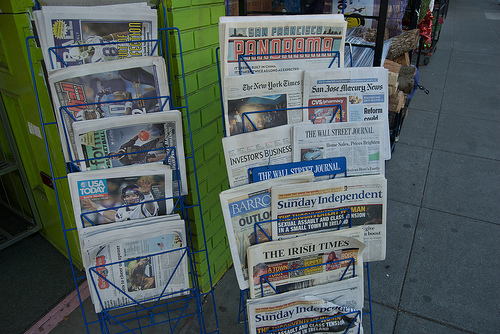 This month’s Carnival of Journalism post is late, because I’ve had my head busy in other places for the last few days – but as per the rules, there shall be no apologies. This month Steve Outing asks what technology or digital trend will up-end journalism next.
This month’s Carnival of Journalism post is late, because I’ve had my head busy in other places for the last few days – but as per the rules, there shall be no apologies. This month Steve Outing asks what technology or digital trend will up-end journalism next.
I want to pick apart the notion of trends for a minute. Trends aren’t about technology. Technology turns up because people create it, sometimes to fulfill needs or because of ideas about the future, but mostly because something that already exists just isn’t good enough. Innovations are born out of frustrations. If enough people have a particular frustration, and something comes along that fixes it, it’ll be widely adopted. Or if something designed to fix a particular frustration turns out to make life just that little bit better for lots of other people, lots of other people will most likely want to use it. Trends are about people, not things.
We’re in the middle of a massive upheaval in how distribution works, and media organisations for the most part are lagging behind in understanding and taking advantage of the changes. Online, the news is centrally hosted, unbundled, available in discrete chunks, accessible from anywhere; news pieces online are not just things to consume, but stations in ongoing journeys, spaces for conversation, and reference points for wider conversation. They’re used in many different ways, not all of which involve actually consuming the content on the page.
But most organisations are very much bound into a model where readers must come to us, rather than one where the news gets to people wherever they happen to be. This is one of the dominant trends at present: distribution models changing from top-down to peer-to-peer, both for news stories (in the sense of content created by journalists and hosted on a single URL) and for news itself (in the sense of the raw informational building-blocks of that content). This is true on Twitter, Facebook, Reddit, Delicious, and most other social media that offers link-sharing capability: we’re already a long way down this road.
The long, difficult road for news organisations is understanding that they can actually be distribution platforms, as well as reporting the news. It’s moving into peer-to-peer news networks, personalised and sociable. Letting people pick what they care about and customise their own experiences on our sites, and making it very easy to get our news wherever they happen to be online. It’s ceding control to the users, trusting them to know what they want, and understanding that they do value journalism enough to consume it voraciously, so long as it turns up at the right time and in the right place.
